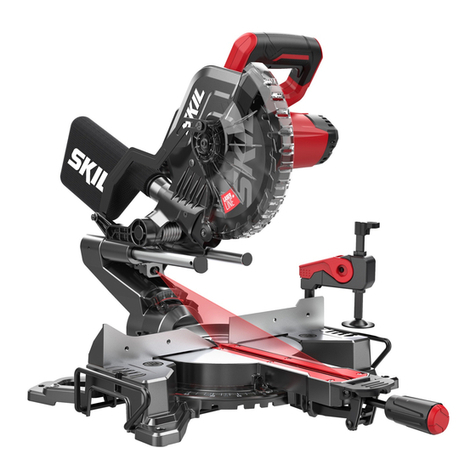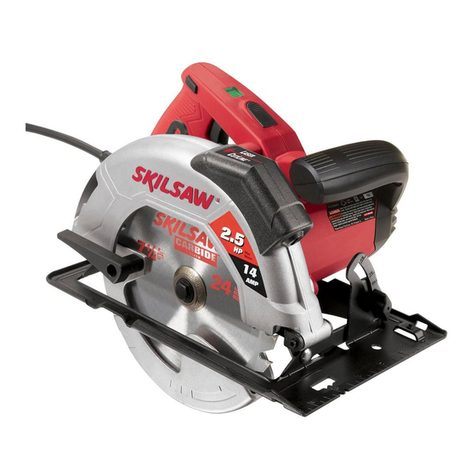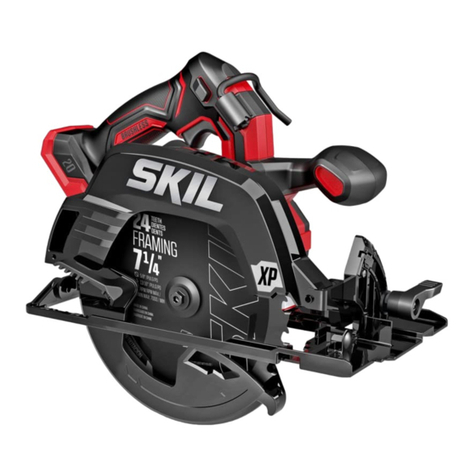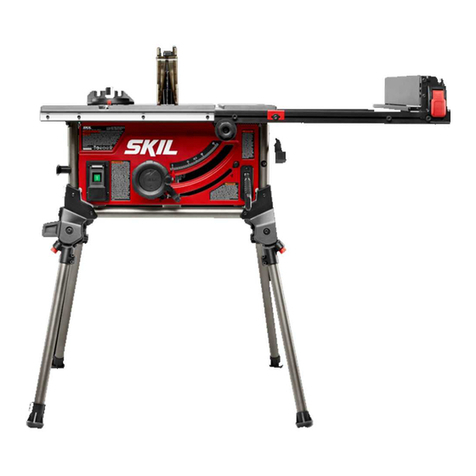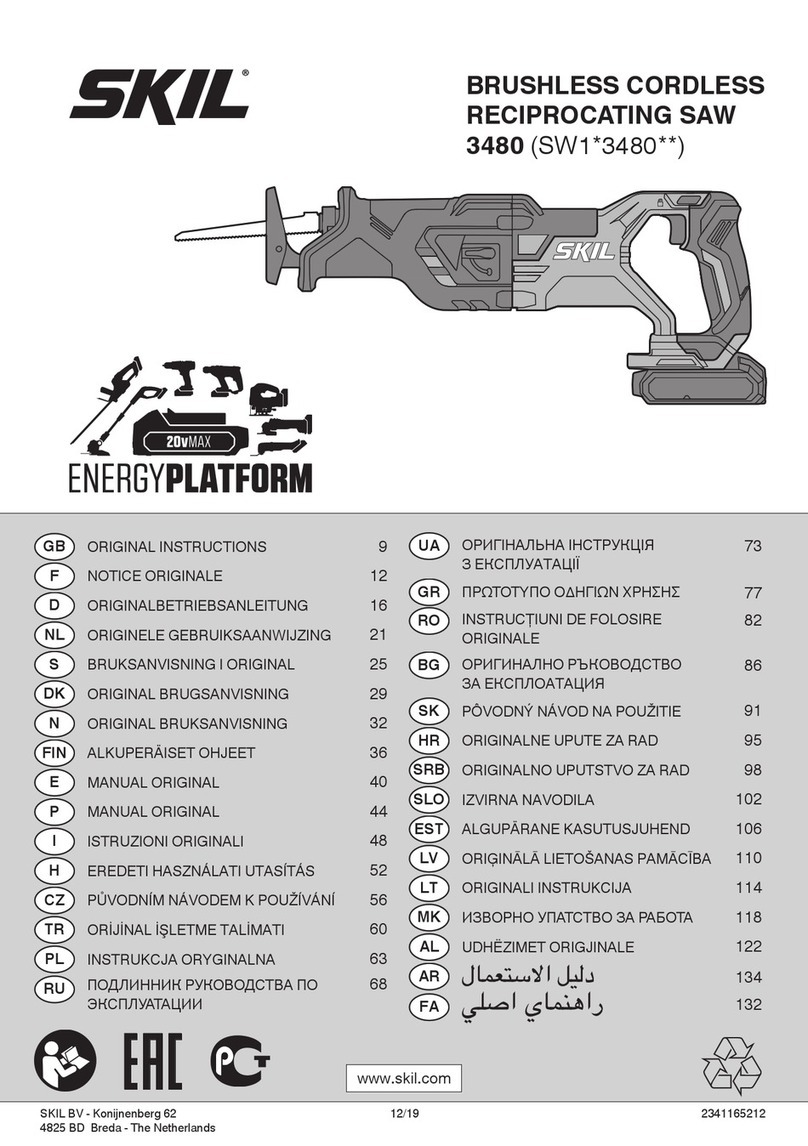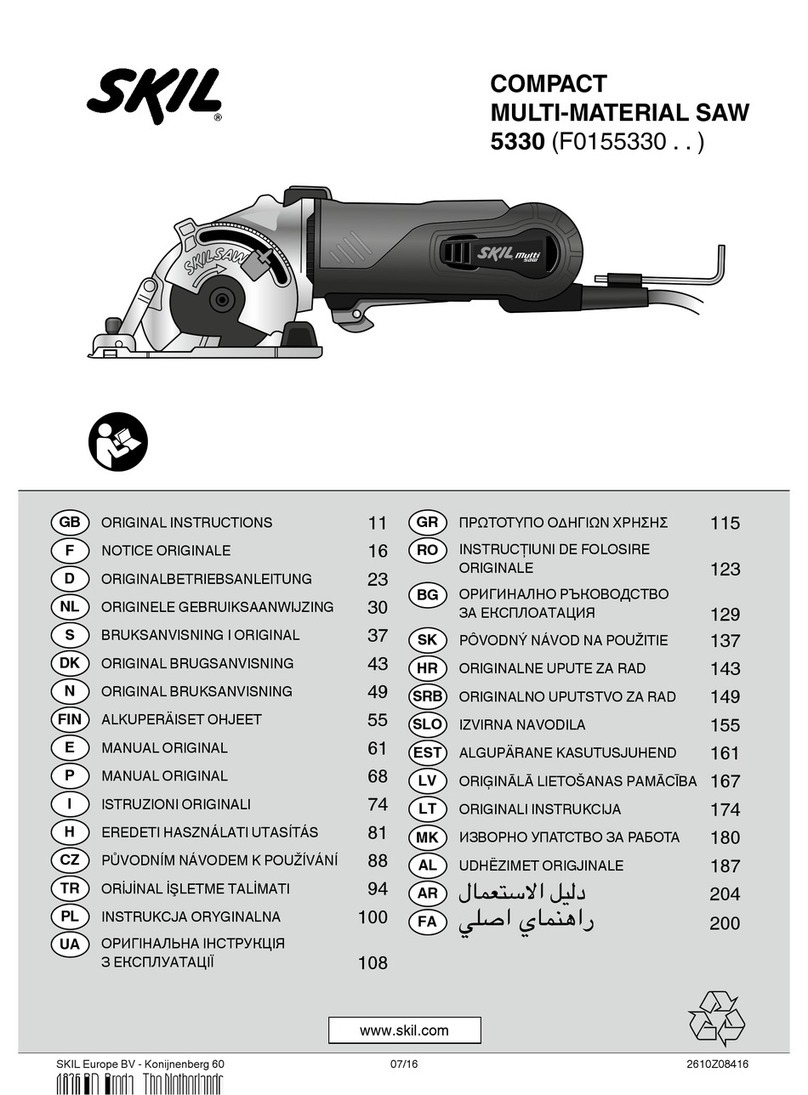
5
When ripping, always use a rip fence or straight edge guide. This improves the accuracy
of cut and reduces the chance of blade binding.
Always use blades with correct size and shape (diamond versus round) of arbor holes.
Blades that do not match the mounting hardware of the saw will run eccentrically, causing loss
of control.
Never use damaged or incorrect blade washers or bolt. The blade washers and bolt were
specially designed for your saw, for optimum performance and safety of operation.
Inspect the condition and quality of the wood and remove all nails from lumber before
cutting. Wet lumber, green lumber or pressure treated lumber require special attention during
cutting operation to prevent kickback.
Hold the saw rmly to prevent loss of control. Figures in this manual illustrate typical hand
support of the saw.
Depending upon use, the switch may not last the life of the saw. If the switch should fail
in the “OFF” position, the saw may not start. If it should fail while the saw is running,
the saw may not shut off. If either occurs, unplug the saw immediately and do not use until
repaired.
This circular saw should not be mounted to a table and converted to a table saw.
Circular saws are not designed or intended to be used as table saws.
Kickback causes and related
warnings
Kickback is a sudden reaction to a pinched,
bound or misaligned saw blade, causing
an uncontrolled saw to lift up and out of the
workpiece toward the operator.
When the blade is pinched or bound tightly
by the kerf closing down, the blade stalls and
the motor reaction drives the unit rapidly back
toward the operator.
If the blade becomes twisted or misaligned
in the cut, the teeth at the back edge of the
blade can dig into the top surface of the wood
causing the blade to climb out of the kerf and
jump back toward the operator.
Kickback is the result of tool misuse and/or incorrect operating procedures or conditions and
can be avoided by taking proper precautions as given below:
Maintain a rm grip with both hands on the saw and position your arms to resist
kickback forces. Position your body to either side of the blade, but not in line with
the blade. Kickback could cause the saw to jump backwards, but kickback forces can be
controlled by the operator, if proper precautions are taken.
When blade is binding, or when interrupting a cut for any reason, release the trigger
and hold the saw motionless in the material until the blade comes to a complete
stop. Never attempt to remove the saw from the work or pull the saw backward while
the blade is in motion or kickback may occur. Investigate and take corrective action to
eliminate the cause of blade binding.
When restarting a saw in the workpiece, center the saw blade in the kerf and check
that saw teeth are not engaged into the material. If saw blade is binding, it may walk up or
kickback from the workpiece as the saw is restarted.
Support large panels to minimize the risk of blade pinching and kickback. Large panels
tend to sag under their own weight. Supports must be placed under the panel on both sides,
near the line of cut and near the edge of the panel.


